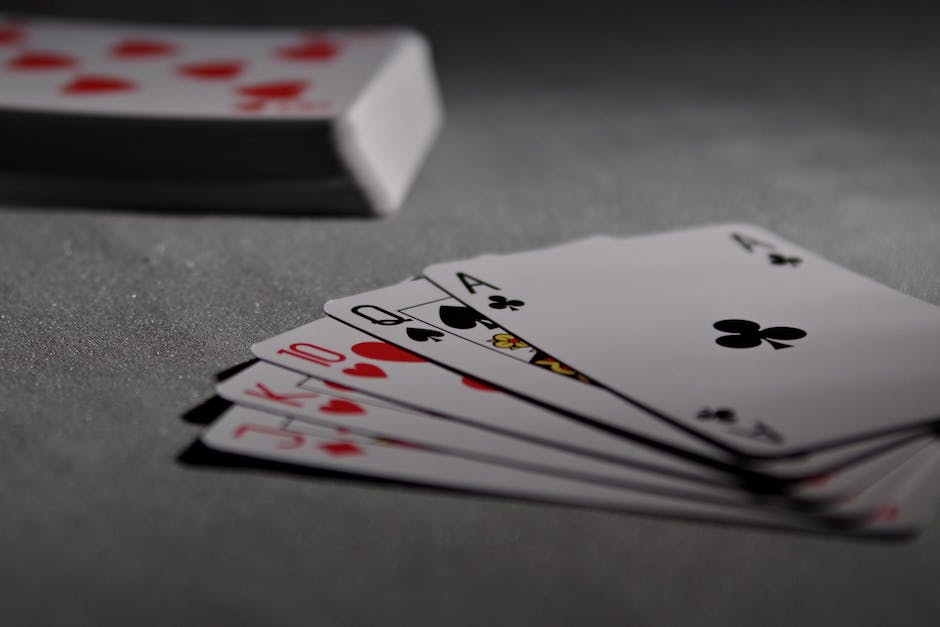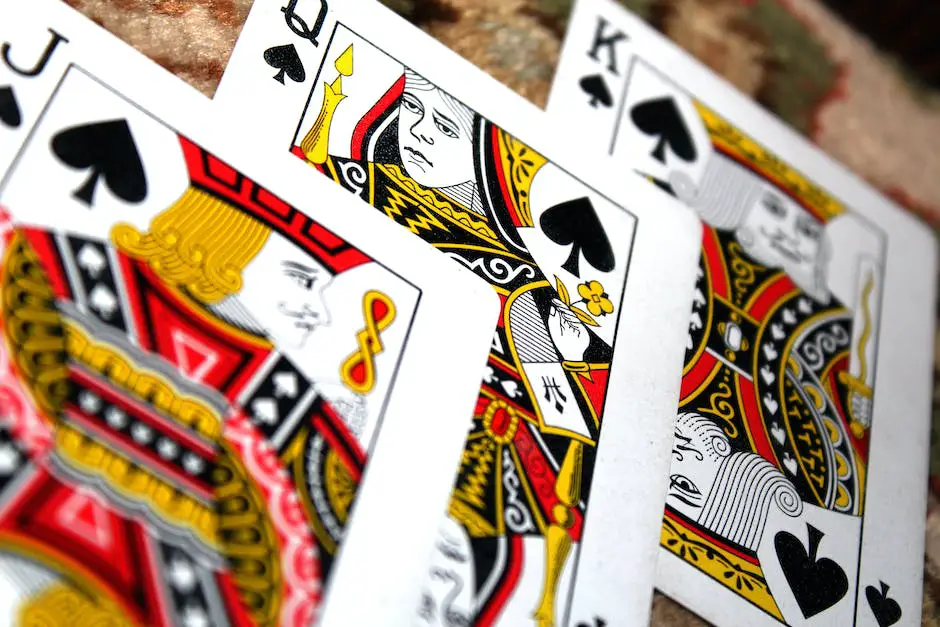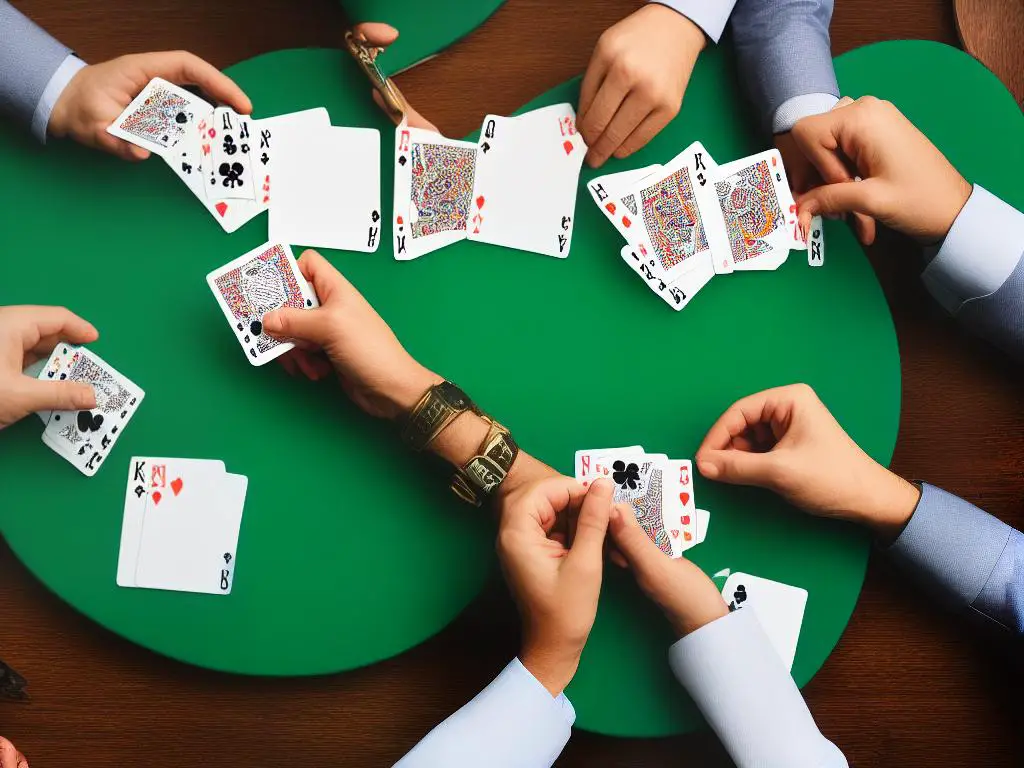Whist, a classic and entertaining card game that has stood the test of time, continues to intrigue both novice players and seasoned enthusiasts. From its historical roots and basic rules to its many variations and strategic depth, Whist offers a rich and engaging experience for players of all skill levels. In this exploration, we will discover the fascinating history of Whist and how it has left its mark on popular culture, as well as delve into the essential rules, gameplay elements, and terminology that define this ever-evolving game. As we expand our knowledge on the advanced strategies and tips, one can experience the thrill of Whist tournaments and clubs, allowing for friendly competition and camaraderie within the community of Whist enthusiasts.
History of Whist
Whist is a classic trick-taking card game that originated in England in the 17th century. The game is played with a standard 52-card deck and typically involves four players divided into two partnerships.The objective of the game is to accumulate the most points by winning tricks, which are rounds of play where each player contributes one card. Whist emerged from a popular game called Ruff and Honours, which was itself derived from an older game known as Triumph.
During the 18th and 19th centuries, the game evolved into its well-known form, shedding various elements and rules along the way. One key development in the evolution of Whist was the introduction of the trump suit, which was added in the early 18th century.The game became widely played in English coffee houses and social clubs, where it attracted a dedicated following and inspired many written works on strategy and tactics. The popularity of Whist continued to grow throughout the 19th century, crossing the Atlantic to gain a foothold in the United States.
Whist’s legacy has endured through its impact on contemporary card games, as it is considered a forerunner to games such as Bridge, Spades, and Hearts. In recent years, there have been efforts to revive interest in Whist, making the game easily accessible to new generations of players.The rich history and cultural significance of Whist card game demonstrates how a simple pastime can have a diverse and lasting impact on the landscape of popular games and social interactions. With roots dating back to the 18th century, this classic trick-taking game has withstood the test of time, attracting players across generations.

Whist Rules
Learn to play Whist
Played with a standard deck of 52 cards, Whist is designed for four players who form two partnerships, with partners sitting directly across from each other. The objective of the game is for each partnership to win as many tricks as they can during play. Though communication or signals between partners are not allowed during gameplay, Whist offers a unique blend of strategy and camaraderie that continues to be enjoyed by modern players.
Each suit in Whist has its own hierarchy, with the Ace being the highest card and the two being the lowest. The game begins with all players receiving 13 cards, with the remaining cards set aside. The dealer then turns the last card dealt to them face up, which establishes the trump suit for the current hand. The player to the left of the dealer leads the first trick by playing any card of their choice.
During gameplay, players must always follow the suit led whenever possible. If a player cannot follow suit, they may choose to play any card, including a card of the trump suit. The trick is won by the person who played the highest ranking card of the suit led, or the highest-ranking card of the trump suit if one or more trump cards were played during the trick. The winner of the trick then leads the next trick, and play continues until all 13 tricks have been played.
Scoring in Whist
Scoring in Whist is based on the total number of tricks a partnership has won. The team that wins seven or more tricks is awarded one point for each additional trick won beyond six tricks. For example, if a team wins nine tricks, they would score three points for that round. The overall game continues until one team reaches a predetermined number of points, often set at five or seven points.
The classic trick-taking card game of Whist involves strategic thinking and meticulous card management. A significant aspect of Whist strategy includes keeping track of cards that have been played, as this information guides decision-making throughout the game. Furthermore, managing trump cards wisely by using them to gain the upper hand in specific tricks when timing and circumstances are optimal is crucial for success. Employing smart use of high-rank cards and carefully evaluating the progression of the game to anticipate future plays is essential for effective Whist gameplay.

Variations of Whist
Whist has evolved over the years, giving rise to many popular variations that share the basic mechanics of trick-taking and suit following but diverge in rules regarding bidding, scoring, and partnerships. Some of the widely recognized versions of this card game include Knockout Whist, Bid Whist, and Norwegian Whist. As each variation comes with its distinct set of rules and strategies, players must adapt their tactics according to the specific game they are playing to ensure success in any Whist encounter.
Knockout Whist, also known as Trumps, is a simpler, faster version that is ideal for introducing beginners to the world of Whist. Played individually between three to seven players, the objective is to win a specific number of tricks, with each round featuring a new trump suit. A player with no collected tricks gets “knocked out” of the game, and the rounds continue until only one player remains – the ultimate winner of the game. This version instills in its players the fundamentals of trick-taking, trump suits, and card hierarchy.
Other notable Variations on Whist
Bid Whist emerged primarily from the African-American community in the United States, offering a strategic twist to the traditional game. This version is played between two fixed partnerships, typically between four players. Partnerships bid on how many tricks they will take in a round and make decisions on the trump suit as well as whether to play with an inverted ranking of cards or an “uptown” hand. The complexity added by the bidding process demands a higher understanding of the card values and how to maximize their potential in a specific round. Communication, understanding, and coordination between the partners are essential for success in Bid Whist.
Norwegian Whist, a popular version in Scandinavia, is a blend of individual and team-based play in a single game. Commonly played with four players, this variation consists of three phases where players strive to win a specific number of tricks without partnerships. In the first and last phase, players compete individually with the objective of winning the tricks. However, in the second phase, when a player reaches a predetermined score halfway through the game, partnerships are formed, and the game moves into team-based play. Norwegian Whist not only tests individual skill in trick-taking but also requires strategic thinking in forming advantageous partnerships.
Solo Whist, another variation of the classic trick-taking card game Whist, is predominantly played in Britain. Unlike traditional or Bid Whist, it is an individual game featuring a bidding system where players can choose to ‘propose’ or ‘accept’ tricks for contracts. Furthermore, players can opt for different contracts such as ‘Misère’ or ‘Abundance’, in which they control the trump suit or play without trumps, adding more strategic layers to the game. The intricacies of Solo Whist present players with a unique challenge, demanding adaptability and versatility in playing styles.

Whist Terminology
Whist’s long history has led to the development of a specialized vocabulary that can be initially confusing for new players. As a classic trick-taking game, it offers a balance of strategy, skill, and luck that continues to captivate both casual and dedicated players.
Understanding the key terminology used in Whist will not only help you understand the game better but also communicate effectively with other players.One crucial concept in Whist is the trump suit.
In Whist, the term “honors” refers to the four highest-ranking cards in the trump suit: the ace, king, queen, and jack.
When playing Whist, you will often hear the term “trick.” A trick consists of four cards, one played by each participant, starting with the person who led.
Lastly, the term “double” or “triple” refers to the scoring system in some variations of Whist, which can impact the overall strategies and enjoyment of the game for players.

Photo by raymondtan on Unsplash
Advanced Strategies & Tips
In the game of Whist, advanced players often use a variety of strategies to increase their chances of winning, and one such strategy is called “signaling.” Signaling is a method of communicating with your partner without using words. Instead, players use subtle cues in their card play to pass information about their hands to their partners. A common form of signaling is “high-low,” where playing a high card followed by a low card in the same suit indicates strength in that suit. Conversely, playing a low card followed by a high card in the same suit typically shows a lack of strength in that suit. Mastering this technique, along with understanding scoring variations like doubles and triples, can greatly improve your teamwork with your partner and maximize your chances of success in Whist.
Another advanced strategy in Whist is known as “Trump Coups.” A Trump Coup occurs when a player leads with the second-highest card in the trump suit, causing the opponent with the highest trump card to play it early, thus weakening their position later in the game. This clever play can give you a significant advantage over your opponents. In addition to the Trump Coup, understanding the concept of “finessing” is crucial for advanced Whist players. Finessing involves leading with a card that is neither the highest nor the lowest in a suit, in the hopes that an opponent will play a higher card, leaving your partner with the opportunity to win the trick with a lower-ranked card.
Should I look to count cards?
Card counting is also an essential skill for Whist players looking to elevate their game. By keeping track of which cards have been played, you can gain a better understanding of the remaining cards in each player’s hand. This knowledge can inform your decision-making and help you more accurately predict the winner of a trick. As both partners work together to achieve victory, sharing information with your teammate is crucial. Card counting can provide valuable insights into your opponents’ potential plays and improve your overall strategy.
In addition to the previously mentioned strategies and tips, advanced Whist players should be mindful of the pacing of the game. Whist is a trick-taking game, meaning that the objective is to win the most tricks. By being aware of the number of tricks each player and team has taken, you can make more informed decisions about whether to be aggressive or conservative in your play. For instance, if you are confident that your team is ahead in tricks, you may opt to play more defensively to maintain your lead and avoid unnecessary risks.

Popular Tournaments & Clubs
One of the largest and most prominent Whist clubs is the Portland Club in London, England. Founded in 1815, the Portland Club has a rich history and is widely considered the home of modern Whist. Today, the club remains an exclusive gathering point for bridge and Whist enthusiasts, regularly hosting tournaments for its members, and providing an excellent opportunity for players to put their evolving strategies and skills to the test.
While the United States has an enthusiastic Whist community, the American Whist League (AWL) is a well-known national organization that holds multiple tournaments throughout the year.
One of their most significant annual events is the Whist Challenge, where the Grand National Whist Tournament takes place. Participants from different local groups and clubs convene to test their skills and enjoy the camaraderie of other experienced Whist players.
What about the AWL
The AWL often shares information about these tournaments and events on their website or through local club newsletters, allowing all fans of the game to stay informed and engaged with the community.
Around the world, smaller Whist clubs and local groups also cater to the game’s fans by hosting their own regular or annual tournaments.
Some popular clubs and groups include the Manchester Whist Club, the St. Andrews Bridge & Whist Club in Scotland, and the Norwich Whist Club in England. These clubs create a localized, tight-knit community for Whist players, whether they are beginners or seasoned veterans of the game.
They often offer workshops, social events, and online platforms for members to share strategies, discuss the latest news, and stay connected.

Through this exploration of Whist, we have come to appreciate the rich history, diverse variations, and strategic nuance that make it a timeless classic. By learning the basic rules, acquiring essential gameplay skills, and mastering advanced strategies, players can benefit from increased competitiveness and a deeper understanding of what makes this game so captivating. As one engages with the thriving Whist community, by joining clubs and participating in tournaments, the true spirit of the game will come to life, fostering friendships, lasting memories, and a shared passion for this wonderful card game. Embrace the challenge and immerse yourself in the world of Whist as you embark on your journey to becoming a skilled and knowledgeable player.
FAQ:
A: Whist is a classic trick-taking card game that originated in the 17th century. It is played with a standard deck of 52 cards and requires four players.
A: In Whist, players work in pairs and take turns playing cards to win tricks. The objective is to score points by winning specific tricks or achieving predetermined goals.
A: The basic rules of Whist involve following suit, playing a higher-ranked card to win a trick, and coordinating with your partner to achieve specific objectives.
A: To enhance your Whist skills, focus on communication and cooperation with your partner, keeping track of cards played, and estimating the probability of certain cards being held by opponents.
A: Yes, Whist has several popular variations, including Bid Whist, Solo Whist, and Knockout Whist. Each variation introduces unique rules and gameplay dynamics.
A: The duration of a Whist game can vary depending on factors such as the number of players and the agreed-upon point limit. On average, a game typically lasts around 30 minutes to an hour.
A: Yes, Whist is available to play online through various platforms and websites. Online Whist allows you to compete against players from around the world or practice against computer opponents.
A: Whist can be enjoyed by players of all skill levels. It is easy to learn the basic rules, but mastering the strategies and tactics may require practice and experience.
